If hospitality is a crucial part of the future workplace, what will be the effect on commercial furniture? Haworth’s observations indicate some emerging trends.
There are a couple of key reasons why we’ve seen such a strong push toward hospitality spaces in the workplace – so says Jessica Carr, Haworth’s Head of Place, Design and Experience (Southeast Asia and India). “With mobile technology freeing people to meet in spaces outside of the office, the coffee shop increasingly became a scene to have meetings with both external clients and internal colleagues. The informal nature of these spaces, compared to a typical office meeting room, can allow for more informal conversations to flow. The relaxed social atmosphere helps to bring down formal barriers and connect individuals,” she suggests.
The translation of hospitality settings to the workplace really boils down to applying a human-centred approach to design. What do people need to do in a particular space, and are there appropriate settings for that to happen? Will a sterile meeting room set the mood for an open, creative discussion? Does an empty lobby provide the welcome and service needed by a visiting executive? Can an office cater to quick touchdown discussions without an entire team being disturbed by the conversation?
The workspace needs to adapt to people’s needs, and with the right functional and atmospheric settings, it can. Globally, Haworth is seeing not only the refinement of casual and collaborative settings within office floor plates, but also a much greater emphasis being placed on the office lobby. More and more organisations are bringing hospitality spaces to the front of house as a setting in which to receive clients (bypassing the formality of the typical meeting room) and as a setting in which to work.
Haworth’s own corporate headquarters in the city of Holland in Michigan, USA (designed by Perkins+Will and completed in 2009) is a case in point. One Haworth Center manifests the evolution in how we work with a variety of flexible spaces. The latest furniture from the Haworth portfolio has recently been installed in the triple-volume lobby, enhancing its functionality significantly. The space, designed by Haworth’s workplace design and facilities team with Patricia Urquiola, could easily be mistaken for a hotel space. A variety of settings for sitting, meeting and working are positioned throughout the lobby, catering to a spectrum of needs. Friendly colours and textures lend a hospitable atmosphere, and varying degrees of enclosure enable engagement and some privacy when needed.
Key to the successful functioning of hospitality-driven spaces at work, suggests Carr, is atmosphere. “What makes the difference in terms of building a hospitality experience is materiality, texture, sound and lighting. You need to have the textures and colours that make a space feel how you expect a cafe to feel. There’s a recognisable cafe typology that makes you feel at ease and signals informality – often it incorporates layers of textured finishes, warm timber and other natural elements. Definitely, lighting and sound play a large part – elements like warm lighting as opposed to cool lighting and also consideration of appropriate acoustic attenuation and background music,” she says.
How does that translate into furniture choices? A cafeteria has a very different atmosphere to a boutique coffee house, and it’s furniture emulating the latter that Carr sees being used the most in the offices of Haworth’s clients. In particular, people are specifying timber legs and thicker, softer fabrics. In terms of functionality, furniture for hospitality-driven spaces needs to allow small groups to huddle together. “That could happen at a long communal table, at a standing-height bar (which is perfect for quick touchdown conversations), or in a booth. Our studies show the booths are popular and well utilised in workplace hospitality spaces,” she says.
Something Carr sees consistently in offices that should be reconsidered, however, is a setting where two deep arm chairs face each other at a distance over a large low coffee table. When two people are engaged in conversation in this setting, it’s difficult to relax and have a close conversation without leaning forward. “That’s why the booth or banquette, in combination with a table (at the right height) and individual chairs on the other side, are very popular,” she explains. “It maintains the intimacy in the conversation but you can relax in your seat.”
As more workers, enabled by technology, view their workplace as extending beyond the four walls of the office, organisations will be increasingly mindful of providing the settings that make the workplace hospitable, functional, and attractive as a destination in itself. Perhaps the days of the sterile reception area are well and truly numbered.
INDESIGN is on instagram
Follow @indesignlive
A searchable and comprehensive guide for specifying leading products and their suppliers
Keep up to date with the latest and greatest from our industry BFF's!
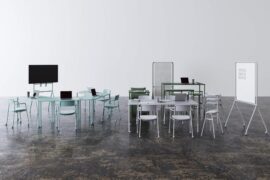
Welcomed to the Australian design scene in 2024, Kokuyo is set to redefine collaboration, bringing its unique blend of colour and function to individuals and corporations, designed to be used Any Way!

A longstanding partnership turns a historic city into a hub for emerging talent

For Aidan Mawhinney, the secret ingredient to Living Edge’s success “comes down to people, product and place.” As the brand celebrates a significant 25-year milestone, it’s that commitment to authentic, sustainable design – and the people behind it all – that continues to anchor its legacy.
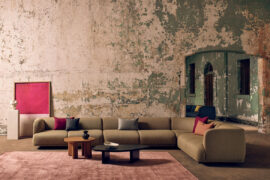
Discover the range designed to let people gather and ideas flow

The workplace strategist and environmental psychologist was in Sydney earlier this year to give a talk at Haworth on the fallacies of the ‘average’ in workplace design.
The internet never sleeps! Here's the stuff you might have missed
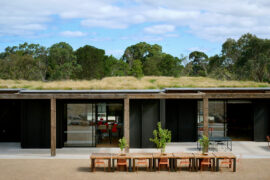
McIldowie Partners, in association with Joost Bakker, has been awarded The Learning Space at the INDE.Awards 2025. Their project, Woodleigh Regenerative Futures Studio, redefines the educational environment as a living ecosystem that nurtures sustainability, innovation, and community.
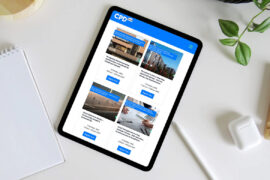
CPD Live’s final live-presented season for 2025 continues with a powerful Day 2 lineup, delving into façade weatherproofing, apartment design trends, smart bathrooms, and digital compliance. Starting from 9 AM AEDT, these free CPD-accredited sessions will help you finish the year with fresh insight and full compliance confidence.
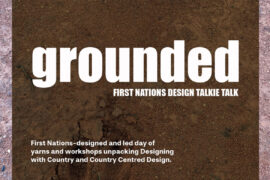
Several design groups are coming together on 29th October, 2025 for ‘grounded,’ a day of talks and workshops on Country-centred design.
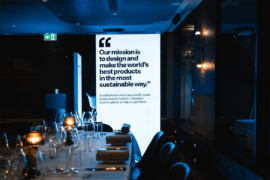
MillerKnoll reimagines the convention of dinner table interactions by plating up a future-forward menu of sustainable design conversation starters as part of the inspiring “Conversations for a Better World” event series.